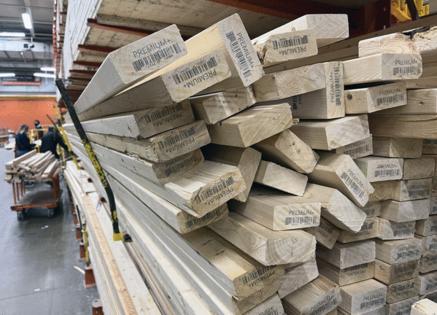Editorial: A building boom on federal land? It just might work
Published in Op Eds
Amid the relentless chaos in Washington — tariffs, trade war, terminally rising deficits — at least one sensible idea has recently emerged: The federal government wants to free up more land to build homes. It’s a great ambition. The devil, as ever, will be in the details.
Few problems vex Americans more than the struggle to find affordable housing. With development chronically lagging demand, the country faces a shortfall of as much as 7.3 million units.
All too often, broad national support for homebuilding morphs into local opposition when the proposed construction is nearby. Policymakers resort to subsidizing buyers (which drives up prices) or to imposing rent caps and other “affordability” requirements on developers (which deters investment).
It’s therefore welcome to see two administration officials team up to open more of the federal government’s 640 million acres of land to housing development. Both bring relevant experience: Secretary of the Interior Doug Burgum, whose department manages 413 million acres of land, was a successful businessman and governor of North Dakota; Housing and Urban Development Secretary Scott Turner worked for an apartment developer and led a White House effort to encourage investment in opportunity zones.
The easiest parcels for the Interior Department to sell or repurpose without an act of Congress are the 245 million acres administered by the Bureau of Land Management, mostly in Western states. Only a small portion of that land will be close enough to roads, water or population centers to be appropriate for housing. Still, by one estimate, just 850 square miles — about half a million acres — of land could provide space for 3 million homes.
As promising as the effort sounds, caution is still advisable. For one thing, the proposal doesn’t address escalating costs for building materials and insurance. Furthermore, a similar effort by former President Joe Biden’s administration — which repurposed some federal land and conditioned certain grants on pro-housing policy changes by local governments — also seemed promising. But too many of the awards went to worthy-sounding initiatives that imposed burdensome affordability mandates or relied on government subsidies instead of removing hurdles to private-sector investment.
Burgum and Turner should learn from those mistakes. In selecting land for development, they should prioritize areas with the lowest rental-vacancy rates. They’ll also need to work closely with local authorities to ensure that homes are actually built, not just promised. A targeted effort focused on cities such as Las Vegas or Salt Lake City — booming, short of housing and near to undeveloped federal lands — could pay real dividends.
In exchange for land, states and local governments should also be required to make concrete changes to draw investors. The free market — not zoning boards or community groups — should be allowed to determine what kind of housing gets built and at what price. Similar levers should be used to free up development within existing metropolitan areas. For instance, cities that ease zoning restrictions, eliminate rent control and streamline permitting requirements should get priority for federal transit and housing money.
This administration has moved fast with a blizzard of initiatives, not all of them universally popular. Housing is one issue on which most Americans are demanding rapid results. With luck, there’s a chance they’ll get them.
____
The Editorial Board publishes the views of the editors across a range of national and global affairs.
_____
©2025 Bloomberg L.P. Visit bloomberg.com/opinion. Distributed by Tribune Content Agency, LLC.

























































Comments